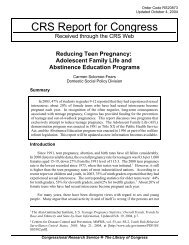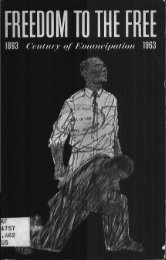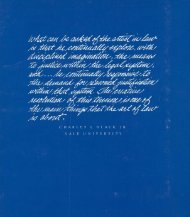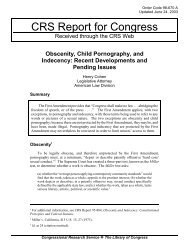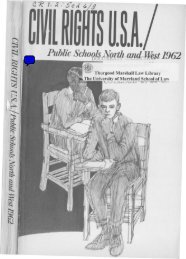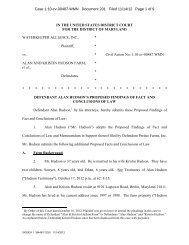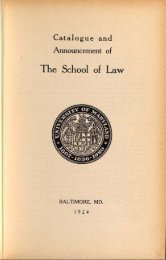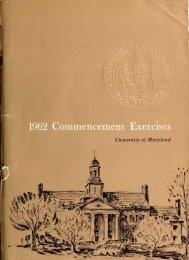journal - University of Maryland School of Law
journal - University of Maryland School of Law
journal - University of Maryland School of Law
You also want an ePaper? Increase the reach of your titles
YUMPU automatically turns print PDFs into web optimized ePapers that Google loves.
1990]<br />
MONTREAL PROTOCOL<br />
The Protocol also calls for multilateral and bilateral cooperation,<br />
specifically cooperation through international organizations on research,<br />
exchange <strong>of</strong> information, and development <strong>of</strong> public awareness.<br />
The accord establishes requirements for data reporting, calling for<br />
UNEP to convene a meeting <strong>of</strong> government experts to recommend to<br />
the parties measures for coordinating data on production, imports and<br />
exports. Emphasizing technology, the Protocol calls for reductions in<br />
emissions <strong>of</strong> controlled substances as well as the development <strong>of</strong> alternative<br />
chemicals and chemical products. Expanded technical assistance<br />
is also urged, particularly in helping the developing nations to comply<br />
3 0<br />
and make the transition to new chemicals and technologies.<br />
Clearly, an enormous degree <strong>of</strong> cooperation was necessary to effect<br />
these extensive provisions. But many participants have acknowledged<br />
that agreement would never have occurred absent solid leadership from<br />
the United States, a major producer <strong>of</strong> CFCs. As early as 1978, the<br />
United States played a leadership role regarding CFC controls by enacting<br />
a near-complete domestic ban on aerosol use. Beginning in the<br />
fall <strong>of</strong> 1986 and extending through the spring <strong>of</strong> 1987, the U.S. took<br />
the lead, sponsoring a series <strong>of</strong> diplomatic initiatives and bilateral scientific<br />
and policy missions. The strong influence <strong>of</strong> the United States is<br />
also evident in the structure and concept <strong>of</strong> the final treaty - which is<br />
almost identical to the one the United States began advocating in early<br />
1986. According to Richard Benedick, the principal U.S. negotiator for<br />
the Montreal treaty, absent the leadership <strong>of</strong> the American govern-<br />
ment, the negotiations may have lacked the "reasoned debate" that<br />
46 9931<br />
"emphasize[d] science as a neutral basis for discussion ... .<br />
Input from the American private sector and Congress also assured<br />
the treaty's success. United States-based environmental groups, making<br />
fastidious use <strong>of</strong> the international media, helped inform the policy makers<br />
and people <strong>of</strong> other nations <strong>of</strong> the dangers <strong>of</strong> ozone layer depletion.<br />
The U.S. Congress also gave an all-important urgency to the treaty<br />
negotiations by serving notice to the international community that if an<br />
acceptable agreement was not reached, the U.S. was prepared to legislate<br />
unilaterally with trade restrictions against countries not accepting<br />
responsibility for CFCs.<br />
30. 26 I.L.M. 1557. Some <strong>of</strong> the most successful international agreements have<br />
stressed diversity among contributors, including such varied groups as government <strong>of</strong>ficials,<br />
public interest groups and legal scholars. See Robinson and Waxmonsky, The<br />
U.S.-U.S.S.R. Agreement to Protect the Environment: 15 Years <strong>of</strong> Cooperation, 18<br />
ENVTL L. 403, 407 (1988).<br />
31. 19 Env't Rep. (BNA) No.8, at 274 (June 24, 1988).



